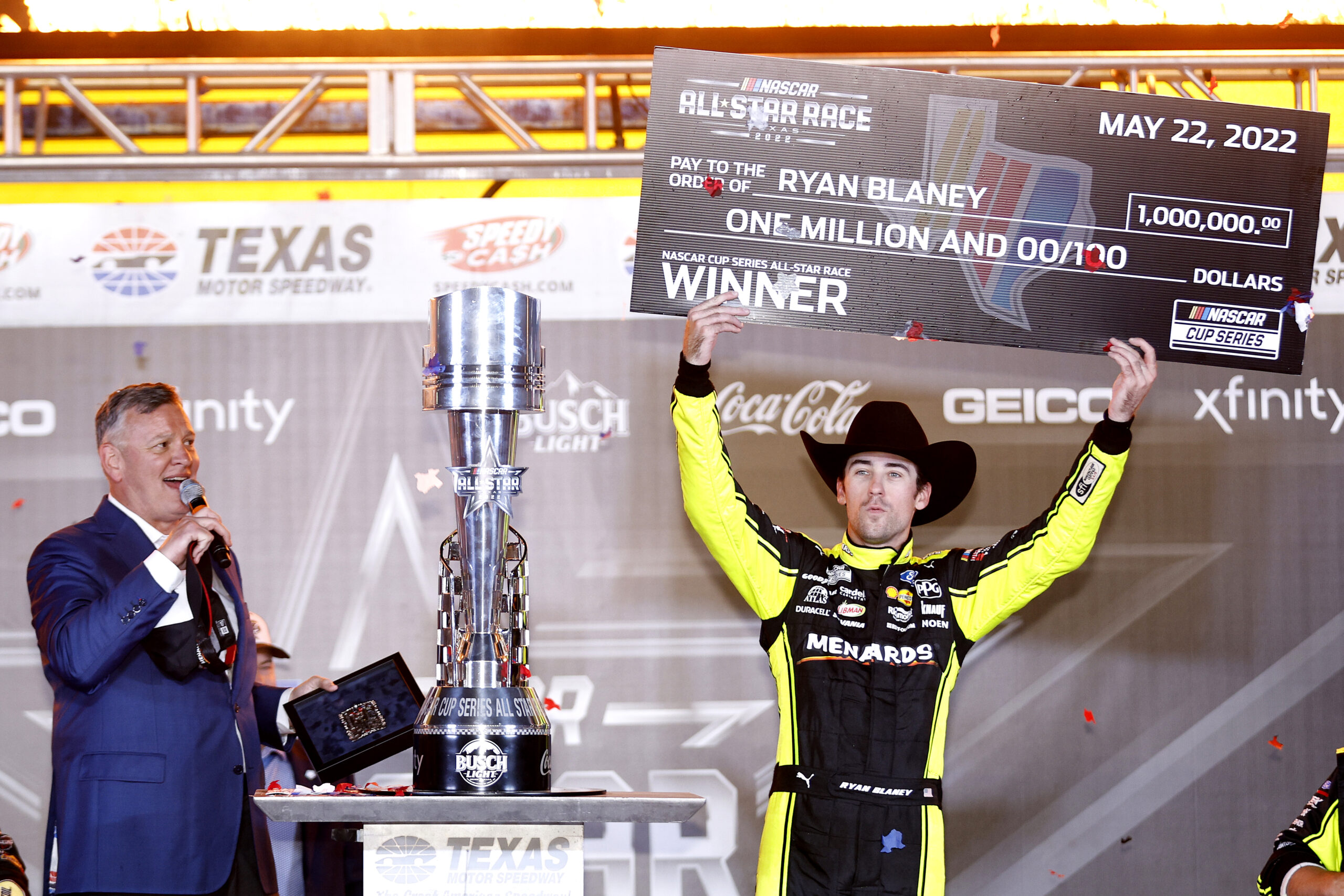

The NASCAR All-Star Race format has changed immensely over the years. From only two segments to multiple segments, and from a 10 lap dash to the finish to a longer dash to the finish. Here is a brief look at the history of NASCAR All-Star Race formats.
Every All-Star format has its’ own little nuances to it including car inversions, eliminations, mandatory pit stops, and the like. This piece is solely to look at the general overall race formats during these races.
For the first two years of the all-star race, the format was essentially just a short race. It was 70 laps in its first year at Charlotte Motor Speedway and it was 83 laps in its second year at Atlanta Motor Speedway. There really is no further way to describe this.
However, this format did produce one of the All-Star Race’s best moments. In the first edition of the race, Darrell Waltrip blew up his engine as he won the race, prompting many to believe Waltrip had an illegal engine that his owner, Junior Johnson, engineered to blow up at the end of the race.
After a lackluster crowd at Atlanta Motor Speedway for the second edition of the race, NASCAR moved back to Charlotte for the All Star Race, and they also made changes to the format. This time they split the race up into three segments.
The first segment was 75 laps, followed by a break. The second was 50 laps, followed by another break. The final segment was 10 green flag laps, meaning caution flag laps did not count.
This format did produce some exciting moments including the 1987 “Pass in the Grass” featuring Dale Earnhardt and Bill Elliot. The other moment being the 1989 All-Star Race where Darrell Waltrip was spun out by Rusty Wallace, giving Wallace the win.
In 1990, the All-Star Race began its’ run as a 70 lap sprint, which would be in effect until 2001. This new format expanded the final stage to 20 laps from the original 10, however. The races using this format were pretty forgettable as the pole sitter won leading all of the laps, and the race was seemingly on the rocks until “Humpy” Wheeler got a bright idea.
With the All-Star Race on the ropes, track president “Humpy” Wheeler came up with an idea no one thought was possible: lighting up a superspeedway. The first night race held on a track more than 1.0 miles in length was the 1992 All-Star Race, billed as “One Hot Night”, and the race was saved.
The format used during these was also 70 laps, but the final segment was shortened to 10 laps where only green flag laps counted. Beginning in 1998, only green flag laps would count during the full race, but the lap numbers for the segments would stay the same.
This could be considered the golden age of the All-Star Race by some as it featured the iconic battle between Kyle Petty and Davey Allison. This era also featured the infamous “backup car” race in 2001 and Mark Martin beating Jeff Gordon on the last lap in 1998 as Jeff Gordon slowed entering turn one.
After 2001, NASCAR elected to expand the All-Star Race slightly to 90 laps. The first and last segments of the race were extended, and only green flag laps would count during the race. In 2002 and 2003, NASCAR also brought in an elimination format where certain drivers were dropped from the field after the first two segments.
Jeff Burton famously exploited the mandatory pit stop required in the 2002 race by pitting on the last lap with his pit box just before the start-finish line. Burton pitted and was able to advance to the second segment.
From 2007 until 2011, the All-Star Race was expanded from three segments to four segments. In 2007 and 2008, it was four even segments with the segments being 20 laps each in 2007, and 25 laps each in 2008.
From 2009 until 2011, it went back to a more traditional split with there being a 50 lap first segment, 20 laps in the second and third segments, and a 10 lap final segment. This format did produce some great moments.
Kyle Busch and Kurt Busch wrecked each other in the final segment of the 2007 race, and Kasey Kahne became the first fan vote driver to win in 2008. In 2010, teammates Kyle Busch and Denny Hamlin tangled as well when Kyle famously walked out of his car into Hamlin’s hauler.
From 2012 through 2015, the All-Star Race went from four segments to five. From 2012 until 2014, it was four 20 lap segments followed by a 10 lap finishing segment. In 2015, the first four segments were expanded to 25 laps.
There were some changes to the format including some years where the lineup to pit before the final stage was determined by average finishing position of the first three stages. In 2012, the winners of each of the first three stages lined up 1-2-3-4 heading into pit road before the final segment.
One of the most memorable moments came from 2014. In this race, Jamie McMurray would win his only all-star race thanks to a great pass during the final laps.
Once 2016 rolled around, NASCAR began to go a little crazy with the format. There were as many as six segments when the race was at Texas Motor Speedway in 2021, and the race was expanded to 140 laps when moved to Bristol in 2020. There was even the chaotic 2016 All-Star Race that I still cannot wrap my head around.
There was also the debut of the high-downforce, high-drag rules package used in NASCAR from 2019-2021 in the 2018 race. The race was won by Kevin Harvick.
Long story short, a lot happened during this time that could not be possibly organized in a list like this. Regardless, NASCAR has found a much more simple format and a popular location for the 2023 race at North Wilkesboro. Could this be the next traditional all-star venue?
